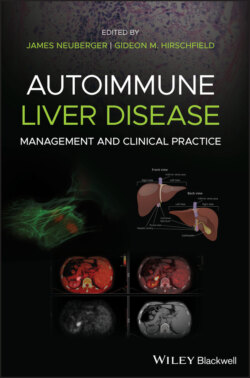Читать книгу Autoimmune Liver Disease - Группа авторов - Страница 34
Protective Role of Biliary HCO3− Secretion
ОглавлениеThe cholangiocyte is exposed to millimolar concentrations of hydrophobic bile salts, which are toxic to other cells such as hepatocytes at micromolar levels. Resistance against these noxious compounds and their cytolytic potential is therefore essential. One of the strategies that cholangiocytes have developed to survive is the biliary HCO3− umbrella.
Biliary HCO3− secretion sustains bile flow and confers its appropriate viscosity, generates part of the alkaline tide necessary for optimal digestion of various nutrients within the intestine, and protects the apical surface of cholangiocytes against protonated apolar hydrophobic BA monomers by maintaining an alkaline pH above the apical membrane. Isoforms of the Cl−/HCO3− exchanger, AE2, are responsible for the vast majority of biliary HCO3− secretion. Dysfunction of any of the elements involved in HCO3− formation might weaken the biliary HCO3− umbrella and contribute to the development of chronic cholestatic liver disease such as sclerosing cholangitis.
